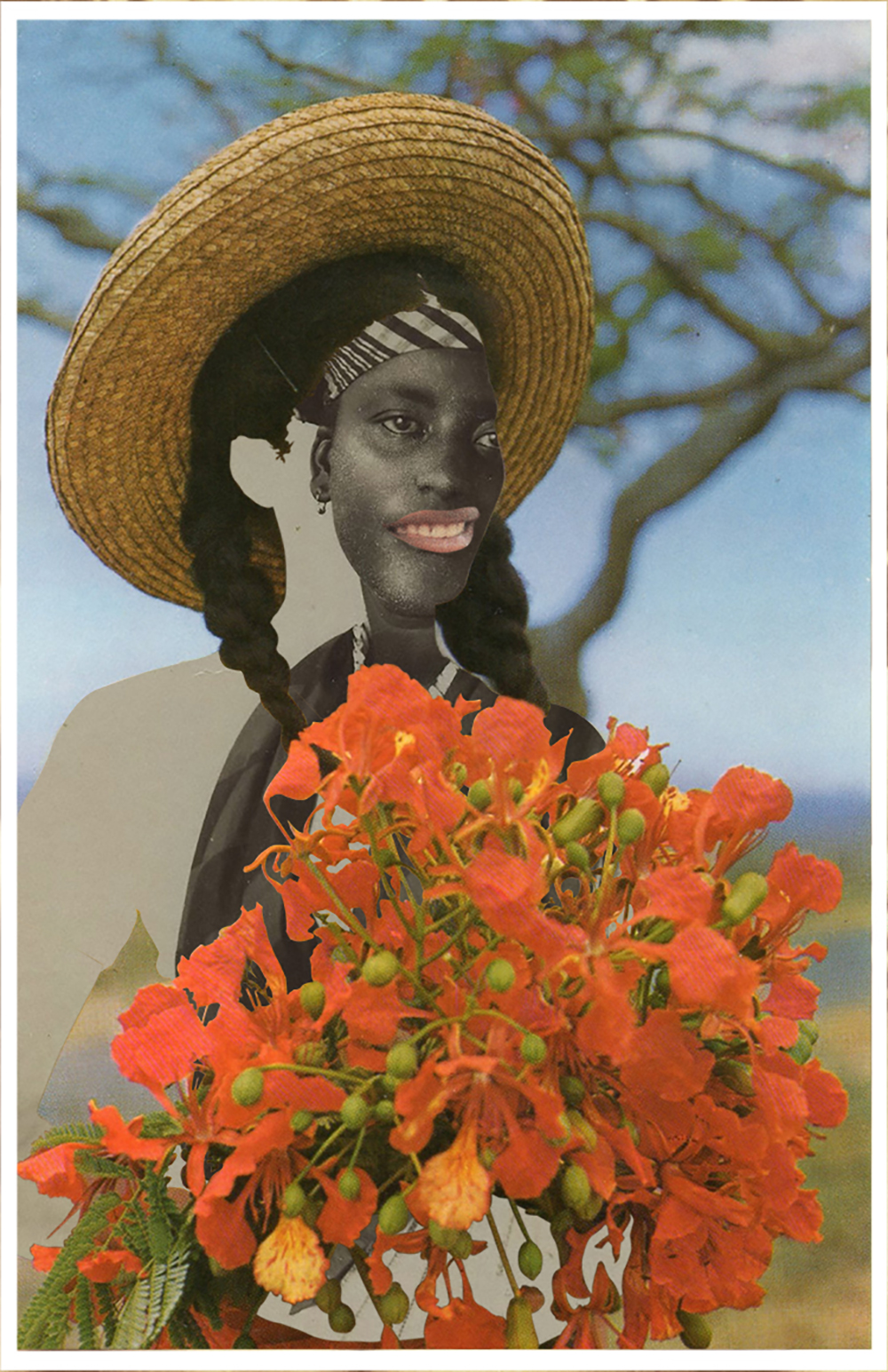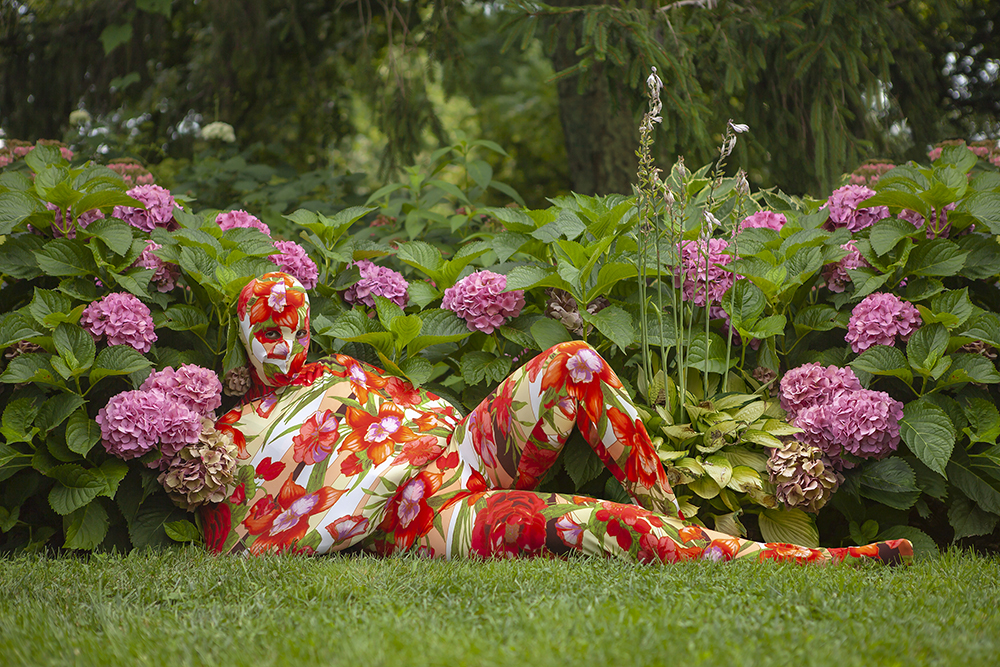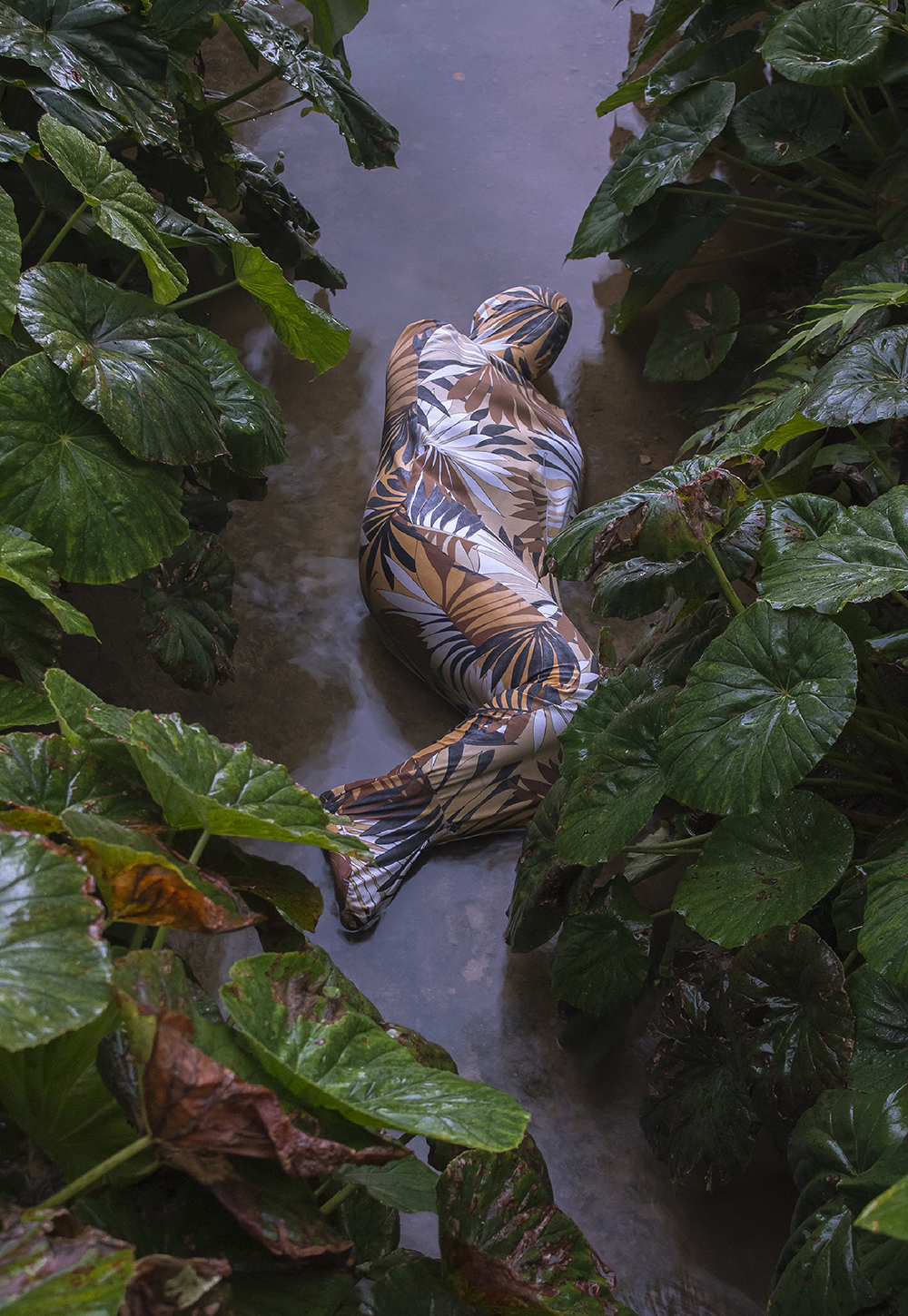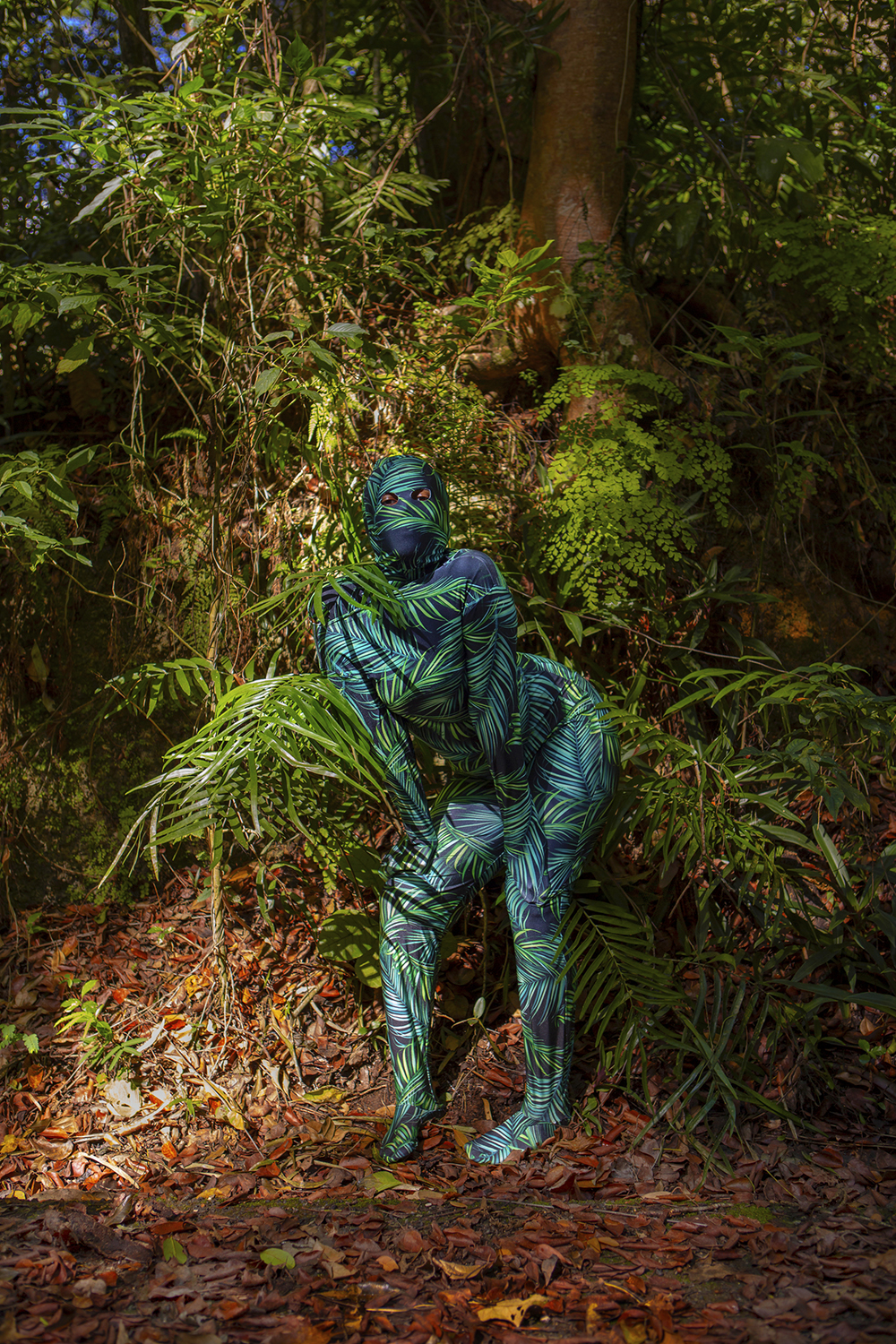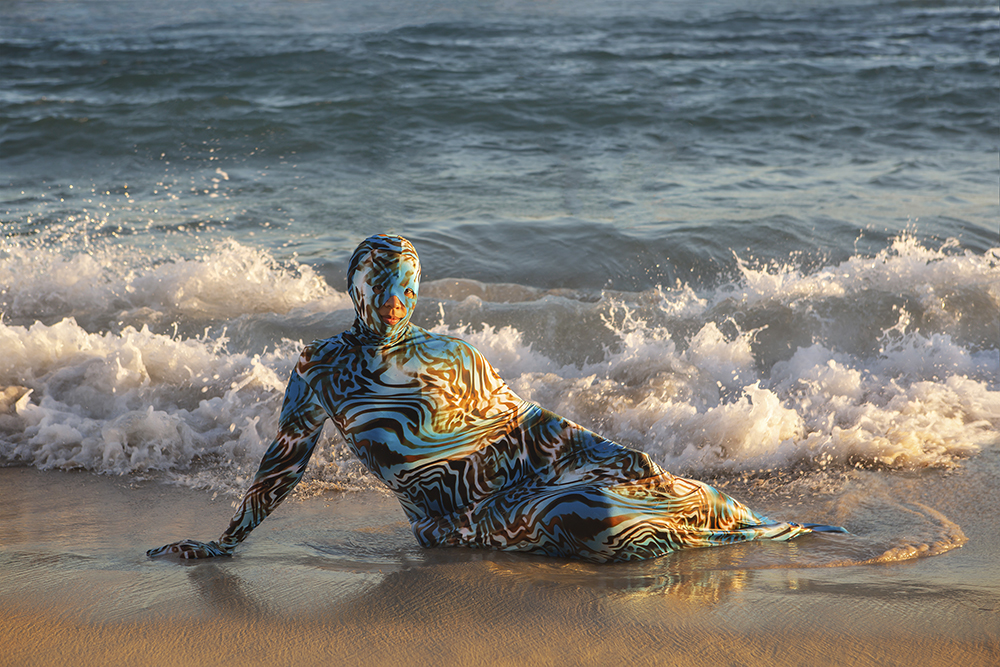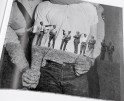Flowering in Photography: Joiri Minaya
Joiri Minari’s work transports pointedly to another side of paradise. Her “tropical flowers” are the fever dreams of the tourist industry. In her collages, she creates collisions of tropes – neon-hued flora, swaying palms, inviting gestures — to subvert assumptions about Caribbean culture and identity. Her juxtapositions obscure as much as they reveal, acting like camouflage meant to confuse hypervisibility.
My ideas are concerned with otherness, self-consciousness and displacement.
I’ve made work inspired by women in my family, labor, dislocation, psychology, myth, art history, magic realism and symbols. I’m interested in how historical hierarchies inform and condition current identities; how constructions manifest through the body: how they are received, internalized and then regurgitated by it.
Living between the United States and the Dominican Republic (and having lived in Belgium) has made me aware of my own difference and subjectivity depending on context. Reflecting on this, my work has transitioned from identity in an intimate manner to examining larger transnational and transcultural exchanges.
My current body of work focuses on the construction of the female subject in relation to nature and landscape in a “tropical” context, shaped by a foreign Gaze that demands leisure and pleasure. Like nature, femininity has been imagined and represented throughout history as idealized, tamed, conquered / colonized and exoticized. I’m currently revising existing cultural products that engage in this form of representation and challenging them through my work.
My process is an on-going exploration across media: a painting or a sculpture might be a departing point for a video or a performance, and they might all merge into a final piece or develop independently. The constant in my work is the presence of the body and the interest in creating distinct power positions with it, often contradictory but operating simultaneously. To navigate binaries in search of inbetweenness, trying to both fulfill and sabotage expectations at once. -Joiri Minaya
Joiri Minaya (1990) is a NY-based Dominican-United Statesian multi-disciplinary artist. She studied art at the ENAV (DR), the Chavón School of Design, and Parsons. Minaya has exhibited across the Caribbean, the U.S. and internationally. She recently received a Jerome Hill Felllowship, a NY Artadia award and the BRIC’s Colene Brown Art Prize, and has participated in residencies at Skowhegan, Smack Mellon, Bronx Museum, Red Bull House of Art, LES Printshop, Socrates Sculpture Park, Art Omi, ISCP, Vermont Studio Center, New Wave and Silver Art Projects.
Currently on view in:
Our Blue Planet: Global Visions of Water, Seattle Art Museum, Mar 18 – May 30 2022
Art 21 in the Studio: Joiri Minaya,
Here Comes the Sun, Art Gallery Burlington (Canada), April 22 – August 13, 2022, Curated by Noor Ale
Follow Joiri Minaya on Instagram: @joiriminaya
In the process of travelling around the Caribbean and surreptitiously dropping off my collages-printed-as-postcards in different gift shops, I also collected some of the postcards that were sold in the various stores. These collected postcards, along with research on various photography archives, are a point of departure for collages I made in 2020.
This series of collages mixes imagery that depict women and nature in the Caribbean and other tropical spaces, like Google search results, Caribbean postcards and touristic brochures, ethnographic photography, art history paintings and other sources. I’m interested in the gestures and performativity of the women depicted, how the images present the subject as “available,” and by extension, the Caribbean landscape, and how these characteristics extend throughout the different visual traditions I pull from in spite of the diverse mediums, formats, location and temporalities they come from. While the collages points to the circularity of the Gaze that produces these images, they also meditate on inhabiting pre-imagined roles as a way to sabotage them.
The title “On opacity” points to Glissant’s ideas of Opacity (Poetics of Relation, 1990), a “right” he claimed in relation to identity: to not give into demands of being legible or transparent, instead resisting being “reduced, cornered or amalgamated” by remaining opaque. In these images, the visual tools used to reduce different cultures to a few tropical signifiers are instead employed to shelter the subject from an easy consumption, while also subverting the common pairing of women and landscapes.
This collage superposes an image of a girl holding poinciana flowers from a 70’s Martinique postcard with an image taken in Martinique circa 1870-1880 by Gaston Fabre, who often turned his subjects into photographic “ethnic types”, an exploration in between ethnography, anthropology and souvenir tourism. Ayoowiri is the indigenous name of a plant (caesalpinia pulcherrima) whose flowers look a lot like poinciana flowers (delonix regia), a picturesque, decorative tree abundant throughout the Caribbean and often represent-ed in touristic media. But these two are entirely different plants. Ayoowiri, also known as peacock flower, is both a medicinal plant and a poison, known for having been used as abortifacient in Surinam by enslaved women wanting to rid their offspring from their fate of being born into slavery.
The background image in Continuum was taken by Roland Bonaparte, who photographed a number of people brought to Europe and the US to be studied by anthropologists and be exhibited in zoological gardens as specimens in reconstructed native villages during the Exposition Universelle of 1889 in Paris.
In Continuum II, the image to the left is a fraction of a well-known painting by Canadian artist Francois Beaucourt recently retitled “Portrait of a Haitian Woman” and formerly known as “Portrait of a Negro Slave” (1786). The image to the right is a section of an image of a touristic brochure of Bávaro, a touristic town in the far East of the Dominican Republic. The collage underscores the shared idea of servitude between the two very different contexts that produced these images, and the parallels in the way both women are available to the maker of the image: holding fruits, with a smile. Hyper-sexualization, vulnerability and exploitation also lurk around women who work on the touristic industry in the Dominican Republic and other places in the Caribbean.
Containers, an ongoing series of performative photographs, features women encased in bodysuits made out of fabric with designs that essentialize or mimic nature, taken at locations that look natural but are man-made This series came out of a desire to three-dimensionally translate some of the collages of the postcard series made after looking up “dominican women” on Google, specifically the ones about women in landscape. The shapes draw heavily on the way women posed in these results. The performer inhabiting the bodysuit needs to adopt the pose the suit dictates, in which the suit is sewn, exploring constructions (of the gendered body, of the landscape) in relation to nature in a “tropical” context, and how this is heavily shaped by a Gaze that demands leisure, pleasure, and tends to be foreign and patriarchal.
Containers and Siboney
Posts on Lenscratch may not be reproduced without the permission of the Lenscratch staff and the photographer.
Recommended
-
Ricardo Miguel Hernández: When the memory turns to dust and Beyond PainNovember 28th, 2025
-
Pamela Landau Connolly: Columbus DriveNovember 26th, 2025
-
KELIY ANDERSON-STALEY: Wilderness No longer at the Edge of ThingsNovember 19th, 2025
-
Jackie Mulder: Thought TrailsNovember 18th, 2025
-
Accidental Evidence: Mike Mandel and Chantal ZakariOctober 22nd, 2025





